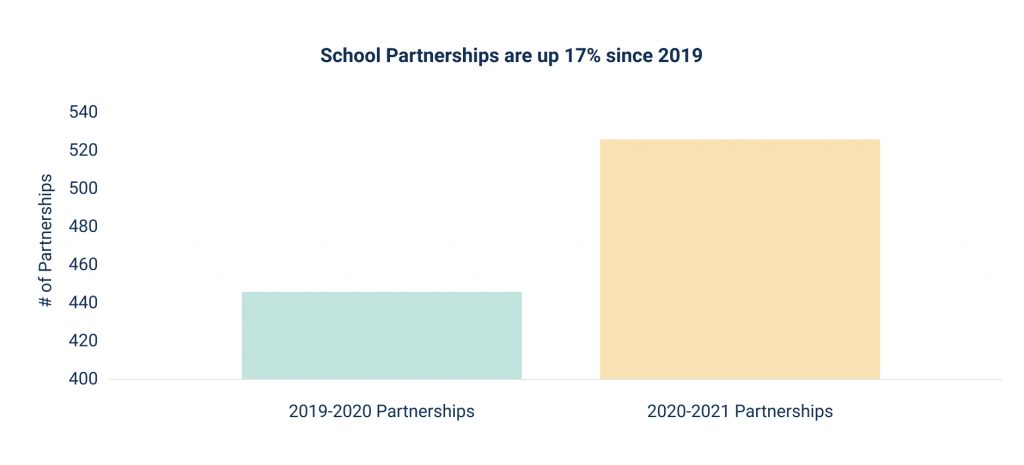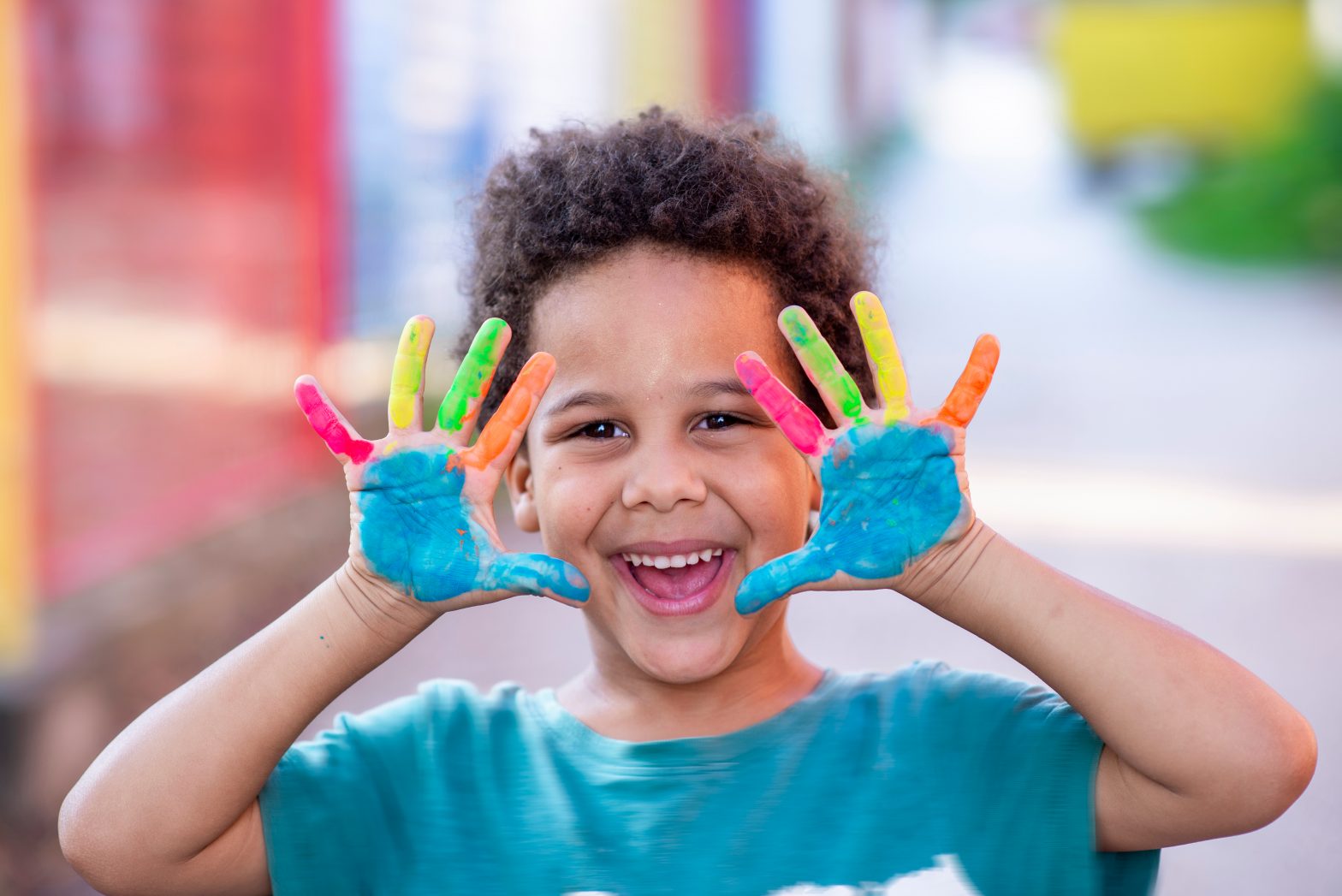The 2021–22 school year has reamplified public concerns regarding COVID-19’s continued impact on our children, including its toll on their mental and emotional wellbeing as well as lost learning opportunities. Addressing these needs will necessitate holistic, comprehensive approaches that require our community to reexamine children’s educational priorities, needs and resources. While many of these strategies will require further investigation and experimentation, the arts have proven to be remarkably valuable in addressing and strengthening students’ social and emotional learning needs.
As a region with remarkable wealth and an abundance of arts resources, we believe that Houston-area schools should work together with arts organizations and institutions to utilize the arts and address our students’ pressing needs.
What is Social Emotional Learning?
Defining Social Emotional Learning (SEL) is complicated because the phrase is often employed differently by various stakeholder groups. A classroom teacher may use SEL to refer to social emotional skills like empathy and perseverance. Meanwhile, a parent may think of SEL as a means for promoting positive relationships amongst their children’s peers.
The Collaborative for Academic, Social, and Emotional Learning (CASEL) defines SEL as the process through which people (both young and old) acquire knowledge and skills to manage their emotions and feelings, achieve goals, display compassion and empathy for others, cultivate and maintain relationships, make better decisions, and ultimately develop a healthy self-image.
Policymakers have come to recognize the importance of SEL in schools. In the reauthorization of the Elementary and Secondary Education Act, i.e., The Every Student Succeeds Act (ESSA), Congress added legislation requiring states to broaden their measures of school quality and effectiveness. The vast majority of states have since responded by adopting measures that assess students’ school engagement, school culture and climate, and SEL. While the emphasis on SEL had been gaining steam, the COVID-19 pandemic made its importance all the more apparent.
About one-third of adults in the Houston Metro Area have reported feeling nervous, anxious, or on edge for at least more than half the days of a week since the start of the pandemic, with some groups faring worse than others. As students across Houston continue to experience high rates of anxiety, trauma and depression in light of the pandemic, it is important to address these mental health challenges directly. Latinos for Education recently shared that 46% of Spanish-speaking parents in Houston have seen their children experience mental health struggles and decreased socialization.
SEL development combats these issues head on. A 2017 study showed that students who received SEL programming tended to handle emotional distress better and experienced less drug usage. Research also shows strong correlations between mental health and academic performance — the same study found that students who received SEL programming averaged 13 percentage points higher than non-SEL peers on academic performance metrics.
These benefits go beyond the individual. A separate 2015 cost-benefit analysis on SEL interventions reported an average of an $11 return on investment for every dollar spent on SEL programming. This type of return on investment can be utilized by the Houston community-at-large to increase economic opportunities, reduce poverty, and improve other outcomes for students.
The Arts Opportunity
There is little consistency in how schools approach teaching SEL concepts to their students. Some campuses integrate SEL into their school improvement and/or strategic plans directly and encourage their teachers to incorporate SEL concepts into existing lesson plans, while others teach SEL concepts entirely separate. Regardless of what approach an individual campus may choose, there is one scientifically proven, yet historically overlooked (and underfunded) avenue for increasing these skills: arts education.
Children grow their skills and behaviors through developmental experiences that allow them to participate in daily life and reflect on how their participation impacts them. These experiences also tend to be the most impactful when they occur in “strong, supportive, and sustained developmental relationships with important adults and peers.” Put another way, students develop skills, habits and behaviors most effectively when they are actively involved in the “doing” of learning, and when they are surrounded by people they care about, like teachers and classmates.
Communal active learning is at the core of arts education. Any art form, whether it be music, theatre, visual arts, dance, etc., provides students the chance to actively explore new concepts, new skills and new behaviors with their peers. Arts education programming affords students an opportunity to mimic or interpret experts and leaders in an art form, participate as much or as little as they feel comfortable, develop self-discipline through practice and contribute to a collective effort. For instance, a classroom of third graders may mimic their art teacher’s still-life painting and attempt to produce something similar. This act forces the student to think critically about how to produce a similar piece, what materials they may need, and how to move their hands. They may look around and engage nearby students for advice or learn by what others are doing. The process of creating art builds focus and endured concentration, while empowering students to express themselves in ways they normally would not be able to articulate.
A 2019 Rice University study examined the impacts of arts educational experiences on Houston students and also found considerable impacts on their social and emotional outcomes. Students who received access to these arts educational experiences saw substantial increases in their writing achievement, compassion for others, and a reduction in school disciplinary issues. Among elementary school students, this same study saw significant increases in school engagement levels, aspirations for college, and empathy.
Funders and decision-makers often point to a lack of empirical evidence as the reasoning behind not investing in the arts. This study is tangible proof that right here in Houston, arts education is a lever for improving SEL outcomes. Our region has already developed a strong, vibrant and growing infrastructure for supporting this work. The creation of the Houston ISD Fine Arts Department in 2017 has seen the Fine Arts student-teacher ratio drop by over 100 students per teacher and has eliminated 30 Fine Arts deserts at elementary schools across the city. Arts Connect Houston, a collective-impact organization of over 80 partners, including arts and cultural organizations, Houston ISD, funders, and city/government leaders exists to increase equal access to the arts in schools across Houston. Since 2019, we have seen partnerships between schools and cultural organizations grow 17% — demonstrating an increase in understanding the impact the arts can have in supporting students, particularly amid an ongoing pandemic. Imagine what that growth could look like, and the subsequent SEL outcomes, if the arts were sufficiently supported.

An arts-rich education in Houston
Margo Hickman, a theatre teacher in Houston noted that when she looks at her students, “so many of them are frustrated. They are angry. The arts allow them to release those feelings.” Margo incorporates Social Emotional Learning through theatre games and meditation. When asked how the arts have impacted her student’s social-emotional learning, she simply added, “The arts have saved people’s lives.”
“So many of the [students] are frustrated. They are angry. The arts allow them to release those feelings.”
– Margo Hickman, Theatre Teacher in Houston
Social Emotional Learning is an important aspect of a child’s development, and the arts provide a proven pathway to grow those skills, but students lack equal access to these valuable educational experiences. As of 2021, it is estimated that nearly 9,000 elementary school students within Houston ISD do not have access to a full-time certified fine arts teacher at their school. Last year, nearly 40 schools reported no partnerships with any arts and cultural organizations, while others worked with as many as six. Moreover, past studies have shown that students from historically underserved communities are much less likely to engage in arts learning experiences outside of school (while affluent students are twice as likely!), meaning that investments from schools and districts are critical for ensuring that these students have these opportunities. Shaela Sageth, a Houston ISD student planning on pursuing an arts-related degree next fall highlights the disparity in access saying “Being low-income, school was my only chance to access arts classes and creative tools while growing up. I would have liked to have had these kinds of diverse arts opportunities in my schools.”
Looking ahead
As our community continues to discuss the best way forward, administrators will face incredible challenges for determining how best to spend scarce resources. As a community, we need to consider holistic, comprehensive approaches that employ the vast resources available in our city to provide all students no matter their neighborhood or school, with the tools they need to successfully navigate the trauma of a global health crisis and prepare them for lifelong success. Arts education is a tried-and-true means for addressing these challenges.
It is up to all of us, now more than ever, to ensure that every child has access to the benefits of an arts-rich education. Our city has already cultivated the necessary tools to implement meaningful change. Despite the horrible crisis we have found ourselves in for the past year and a half, we have also been afforded an incredible opportunity to reevaluate how we educate our students. It is time to invest in the “arts opportunity” and grow and nurture our children’s humanity, sense of community, and perseverance. Doing so will ensure that Houston remains a vibrant and thriving community for years to come.
By Michael Sheehy, Deborah Lugo, and Daniel H. Bowen, PhD
Michael Sheehy is the Data + Advocacy manager for Arts Connect Houston. He holds a degree in theatre from the University of Kentucky and an M.P.P. from the Sanford School of Public Policy at Duke University. Before coming to Houston, Michael worked as a researcher measuring audience response to COVID-19 and social impact for WolfBrown and El Sistema USA respectively.
Deborah Lugo is the Executive Director for Arts Connect Houston. Through her work, she facilitates strategic alignments and opportunities in order to expand access to arts education for students throughout the Houston ISD. Deborah, originally from Puerto Rico, holds a Master in Public Policy from Princeton University and a Bachelor in Violin Performance from Florida International University. Before her time at Arts Connect, she was the Executive Director of Mercury Chamber Orchestra.
Daniel Bowen, Ph.D. is an associate professor with Texas A&M University’s Department of Educational Administration and Human Resource Development, a research affiliate of Rice University’s Houston Education Research Consortium (HERC), and the co-director of the National Endowment for the Arts-sponsored Arts, Humanities, and Civic Engagement Lab. Dr. Bowen primarily investigates the educational impacts of arts, humanities, and civic engagement learning experiences through experimental and quasi-experimental research methods.
